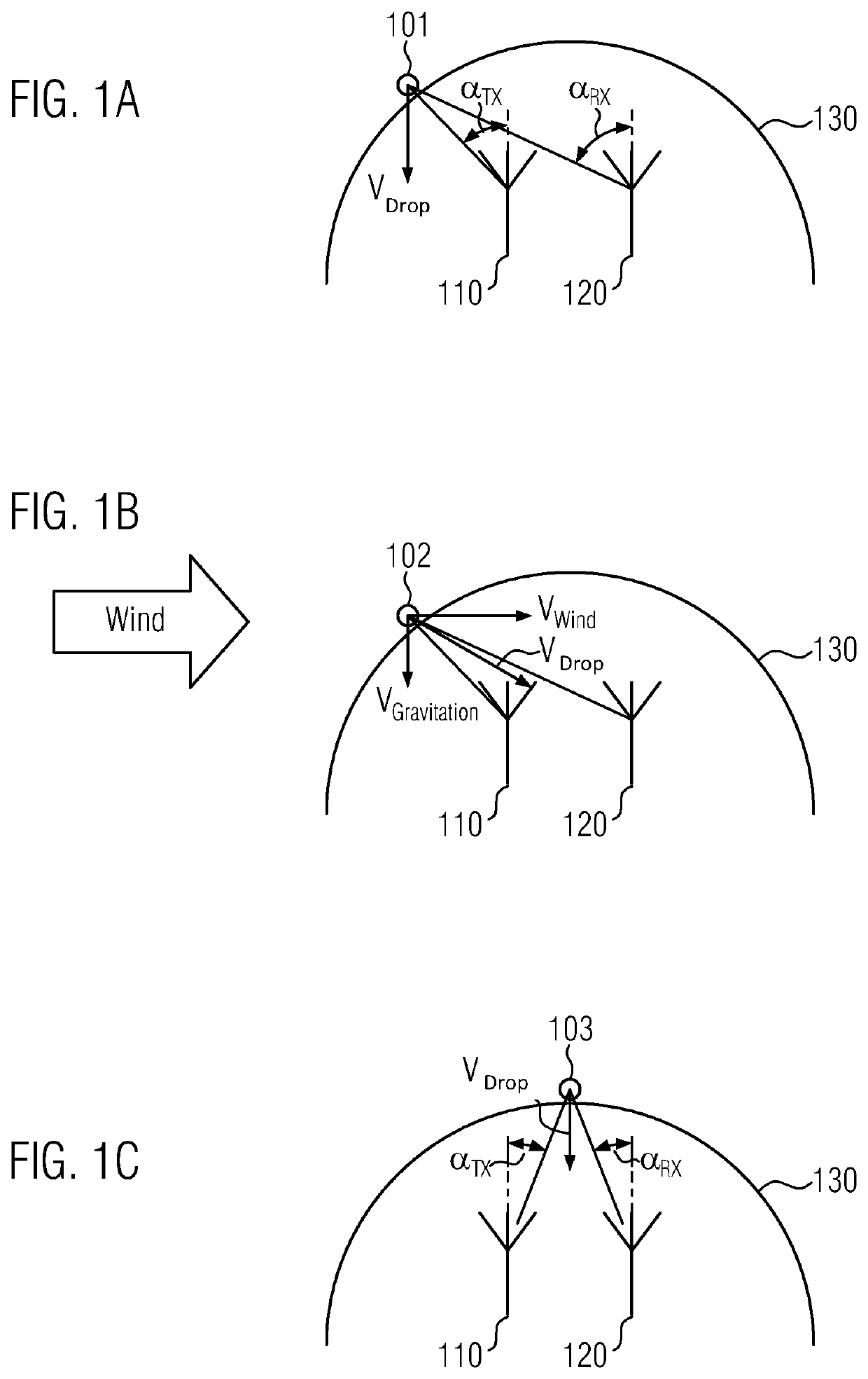Apparatus and method for measuring precipitation
a precipitation and apparatus technology, applied in the field of devices and methods for measuring precipitation, can solve the problem of erroneously deducing too large raindrops
- Summary
- Abstract
- Description
- Claims
- Application Information
AI Technical Summary
Benefits of technology
Problems solved by technology
Method used
Image
Examples
Embodiment Construction
[0010]The above objects are addressed by a device for measuring precipitation by means of radar comprising an antenna adapted to transmit and receive radar waves and a dielectric lens, the antenna being oriented to the dielectric lens such that radar waves radiated from the antenna pass through the dielectric lens. Unlike the bi-static state-of-the-art radars described above, the present invention is a monostatic precipitation radar in which the same antenna is used both to transmit the radar waves, i.e. the primary signals, and to receive the reflected radar waves, i.e. the secondary signals. In particular, the device can have exactly one antenna, which serves simultaneously as transmission and reception antenna.
[0011]Transmission and reception antennas for radar waves are well known in the art and are therefore not described in detail here. It should only be mentioned that the antenna can be designed with a sufficiently large aperture angle in order to have a sufficiently large pa...
PUM
 Login to View More
Login to View More Abstract
Description
Claims
Application Information
 Login to View More
Login to View More - R&D
- Intellectual Property
- Life Sciences
- Materials
- Tech Scout
- Unparalleled Data Quality
- Higher Quality Content
- 60% Fewer Hallucinations
Browse by: Latest US Patents, China's latest patents, Technical Efficacy Thesaurus, Application Domain, Technology Topic, Popular Technical Reports.
© 2025 PatSnap. All rights reserved.Legal|Privacy policy|Modern Slavery Act Transparency Statement|Sitemap|About US| Contact US: help@patsnap.com


